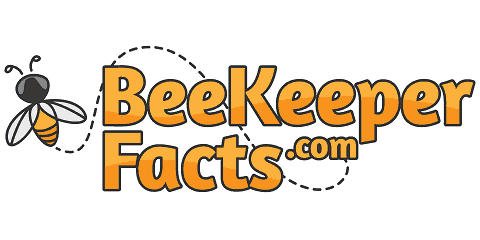Oil-Collecting Bees: An All-Inclusive Guide
Wouldn’t it be odd for you to see a bee that ignores that tasteful nectar and go for oil hunting instead? That’s what a large number of oil-collecting bees do.
Why do they do that, what do they do with it, and what else do they help the ecosystem with? Let’s find out.
What Are Oil-collecting Bees?
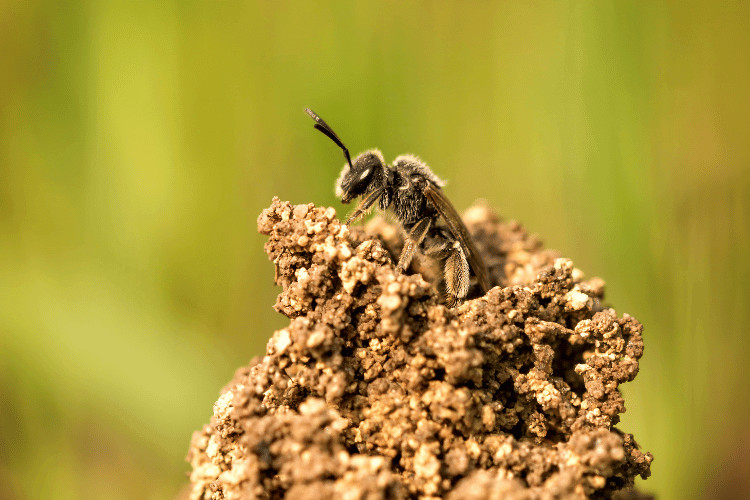
Oil-collecting bees are a group of bees that collect oil from flowers as a food source for their larvae.
They are found in tropical and subtropical regions around the world, and there are over 400 species of oil-collecting bees known to science.
Characteristics of Oil-collecting Bees
- Oil-collecting bees have specialized hairs on their legs and abdomen that are used to collect oil when the bee lands on an oil flower. These hairs are often long and velvety, and they help the bees to absorb the oil from the flowers.
- Oil-collecting bees have a strong preference for flowers that produce oil. They will often ignore flowers that produce nectar, and they will only visit flowers that produce oil.
- Oil-collecting bees use the oil they collect to feed their larvae. The larvae feed on the oil, and it provides them with the nutrients they need to grow and develop.
- Oil-collecting bees also use the oil to line their nests. The oil helps to waterproof the nests and protect the larvae from predators.
What’s the Purpose of Oil-collecting Bees?
Oil-collecting bees serve a pivotal purpose in plant-pollinator relationships. These remarkable insects have evolved to collect floral oils from specialized plants, facilitating pollination interactions.
As mentioned earlier, the primary function of oil collection by oil bees is to provide essential nourishment for their developing larvae and to waterproof their nests. Yet, that’s often done by the females.
The specific purpose behind oil collection by male bees remains an ongoing area of study, sparking curiosity about the potential roles they play in this fascinating ecological dance.
Through mutualistic interaction, oil-collecting bees contribute to the successful reproduction of certain plant species and the overall health of their respective ecosystems.
Oil-collecting Bees: Habitat and Foraging Preferences
Oil bees exhibit distinct habitat preferences and foraging behaviors that reflect their specialized ecological roles. These small wonders are adapted to thrive in specific environments where their essential food sources are found.
- Preferred Habitats: Oil-collecting bees are often associated with regions characterized by the presence of oil-secreting flowers, which serve as their primary forage. They are commonly found in ecosystems such as:
- Wetlands: Many oil-producing plants, like yellow loosestrife (Lysimachia), grow near wetlands, providing an ideal habitat for these bees.
- Coastal Areas: Certain species of oil bees, such as Hesperapis oraria, specialize in foraging on coastal plain honeycomb head plants.
- Foraging Behavior: The foraging behavior of oil-collecting bees is tightly linked to the availability of their unique food sources:
- Target Plants: Oil-collecting bees are specialists, relying on specific species of oil-producing flowers, such as Lysimachia and Vaccinium (blueberries, cranberries).
- Oils and Pollen Collection: Female bees gather floral oils from secretory glands in the flowers’ spurs. These oils are mixed with pollen and transported back to their nests.
- Mating and Nectar: While females primarily collect oils, males focus on nectar collection, engaging in behaviors like patrolling floral patches for female encounters.
Where Can You Find Oil-collecting Bees?
Oil-collecting bees are found in warm, flowery areas around the world. They prefer open habitats with a variety of plants, and they have a strong preference for oil-producing flowers.
Here are some places where you might find oil-collecting bees:
- Meadows: Meadows are a great place to find oil-collecting bees. They are open areas with a variety of flowers, including many that produce oil.
- Fields: Fields are another good place to find oil-collecting bees. They are often planted with crops that attract oil-producing flowers, such as sunflowers and canola.
- Forests: Oil-collecting bees can also be found in forests, but they prefer open areas within the forest, such as meadows and clearings.
- Gardens: Oil-collecting bees can sometimes be found in gardens, especially gardens that are planted with oil-producing flowers.
If you are looking for oil-collecting bees, the best time to go looking is during the day, when the bees are most active.
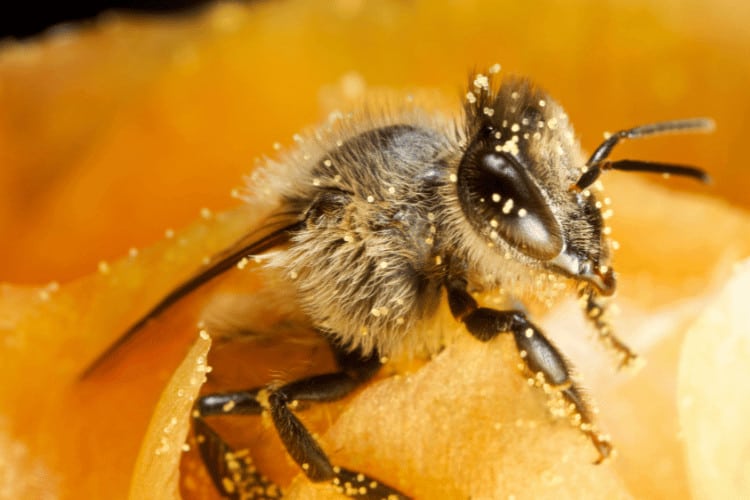
Oil-collecting Bees Life Cycle, Mating, and Nesting
The life cycle, mating behavior, and nesting habits of oil-collecting bees offer a fascinating glimpse into their reproductive strategies and survival mechanisms.
- Life Cycle: Oil-collecting bees follow a specific life cycle:
- Univoltine: These bees typically have one generation per year.
- Egg-Laying: Female bees lay eggs on a mixture of floral oils and pollen, forming a nutritious provision for the developing larvae.
- Pupa Stage: Larvae undergo pupation, transforming within their nests.
- Emergence: Adults emerge the following year, coinciding with the bloom of their preferred floral resources.
- Mating Behavior: Mating behaviors of oil-collecting bees are noteworthy:
- Mating Strategies: Males often patrol areas near flowers, waiting to intercept females.
- Courtship and Mating: Males exhibit courtship behaviors before mating.
- Mate Selection: Female choice and pheromones play roles in mate selection.
- Nesting Habits: Nesting behaviors contribute to the survival of oil-collecting bees:
- Ground Nesters: Most oil-collecting bees are solitary ground nesters.
- Nest Construction: Nests are lined with waterproofing oils and pollen mix.
- Protection: Nest linings ensure humidity and protection for developing offspring.
- Habitat Specificity: Nesting sites are often associated with the availability of preferred oil-producing flowers.
Importance of Oil-collecting Bees in Ecosystems and Agriculture
Oil-collecting bees are an important part of many ecosystems. They are pollinators of many plants, including orchids, milkweeds, and passion flowers. They also help to disperse seeds and pollinate crops, such as sunflowers and canola.
Those bees play a vital role in Plant-Pollinator Interactions. They are attracted to flowers that produce oil, and they help to spread pollen from flower to flower. This helps to ensure the reproduction of plants and the production of food for humans and other animals.
In agriculture, oil-collecting bees are important pollinators of many crops. They are especially important for crops that produce oil, such as sunflowers and canola. Oil-collecting bees can help to increase crop yields by up to 30%.
Common Questions About Oil-collecting Bees
What Do Oil-collecting Bees Eat?
Oil-collecting bees eat pollen and nectar from flowers. However, unlike other types of bees, oil-collecting bees have a strong preference for flowers that produce oil. This is because oil is a good source of protein and fat, which are essential nutrients for the bees and their young.
Are Oil-collecting Bees Dangerous?
Oil-collecting bees aren’t generally considered to be dangerous. They aren’t aggressive and will only sting if they feel threatened. However, it is important to be cautious when handling any type of bee, as even a non-aggressive bee can sting if it feels threatened.
Here are some tips for avoiding being stung by oil-collecting bees:
- Do not swat at bees. This will only make them more likely to sting.
- If you see a bee, calmly walk away. Do not make any sudden movements.
- If a bee lands on you, do not try to brush it off. Gently blow it away or wait for it to fly away on its own.
- If a bee stings you, remove the stinger as quickly as possible. Apply a cold compress to the area to reduce swelling and pain.
What Size Are Oil-collecting Bees?
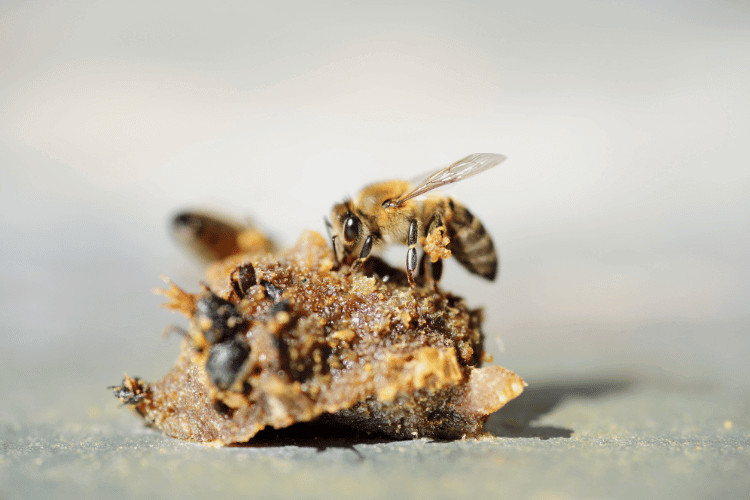
Oil-collecting bees are typically small to medium-sized bees, with a body length of about 3-13 millimeters (0.12-0.5 inches). They have a slender body and long legs. Their wings are also relatively long, making them nimble and fast.
The size of oil-collecting bees can vary depending on the species. For example, the smallest oil-collecting bee is the Chalepogenus Holmberg, which has a body length of only about 3 millimeters (0.12 inches).
The largest oil-collecting bee is the Megachile pluto, which has a body length of up to 30 millimeters (1.2 inches). The Megachile pluto was thought to be extinct until it was spotted again recently.
How to Identify Oil-collecting Bees?
Oil-collecting bees can be identified by their:
- Small to medium-sized body, typically 3-13 millimeters (0.12-0.5 inches) long
- Slender body and long legs
- Relatively long wings that allow them to fly quickly
- Hair on their legs and abdomen that helps them to collect oil from flowers
- Pollen baskets on their hind legs, used to store pollen
- Coloration that varies depending on the species, but is often black, brown, or metallic green
How to Attract Oil-collecting Bees?
Diverse Plant Selection: Create a diverse range of flowering plants to ensure a steady supply of food sources throughout the bee’s active season.
Provide Nesting Sites: Some oil-collecting bees nest in the ground, while others may use cavities in wood or stems. Provide nesting opportunities by leaving patches of bare soil or incorporating bee-friendly structures like bee hotels.
Avoid Pesticides: Minimize or eliminate the use of pesticides in your garden. Chemicals can harm oil-collecting bees and disrupt their natural behavior.
Create Sunny Spaces: Oil-collecting bees are often attracted to sunny areas. Design your garden to include both sunny and shaded spots.
Encourage Biodiversity: A diverse garden with various plant heights, colors, and shapes can attract a wider range of pollinators, including oil-collecting bees.
Final Words
Oil-collecting bees are fascinating creatures that play an important role in our ecosystems. They are pollinators of many plants and also help to disperse seeds and pollinate crops, such as sunflowers and canola.
Oil-collecting bees are an important part of our world, and we need to do everything we can to protect them.
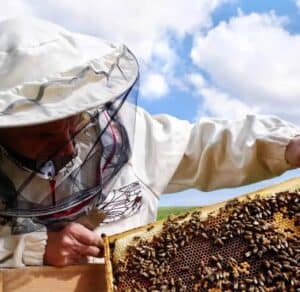
Joseph Davis
My goal is to show that anyone can take up beekeeping and it can be a very rewarding hobby. I strive to share my experiences and answer any questions you may have.
